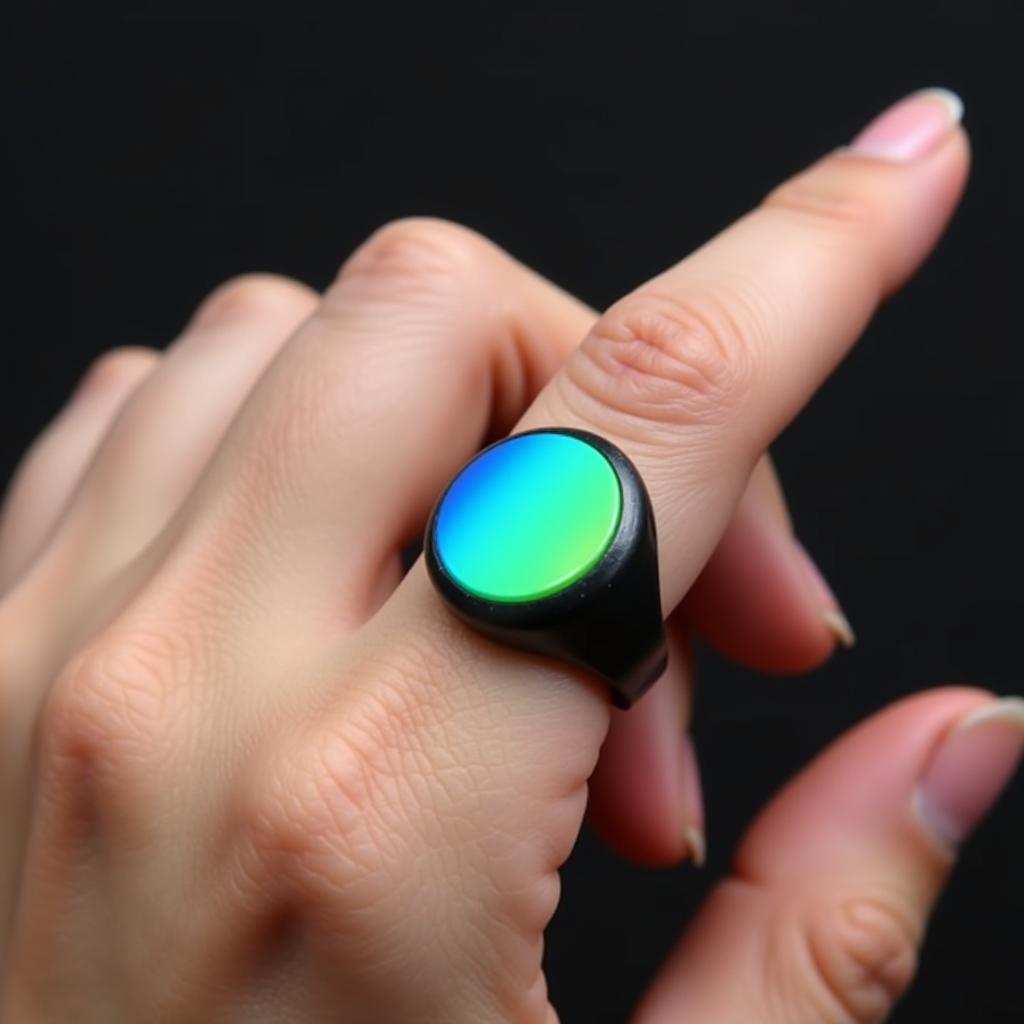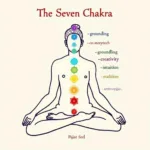Mood rings, those iconic accessories of the 70s, have experienced a resurgence in popularity. But beyond their nostalgic appeal, many wonder: what are the colors and meanings of a mood ring? These rings claim to reflect the wearer’s emotional state through changes in color. Let’s dive into the fascinating world of mood ring colors and explore the science (or perhaps, the myth) behind them.
Decoding the Colors of a Mood Ring
A mood ring’s color changes are based on the temperature of your finger. The stone of a mood ring contains thermotropic liquid crystals that twist and turn in reaction to shifts in temperature. This twisting alters the wavelengths of light that are absorbed and reflected, resulting in a change of color. So, while the ring is reacting to something physical, it’s not directly reading your emotions. Rather, it’s reacting to the subtle temperature fluctuations on your skin’s surface, which can be influenced by your emotional state.
Mood Ring Colors and Their Commonly Associated Meanings
Though not scientifically based, there are generally accepted color associations for mood rings. Remember, these interpretations should be taken with a grain of salt. They’re more about fun and playful interpretation than hard-and-fast emotional analysis.
- Dark Blue/Green: Often associated with calmness, relaxation, and serenity. Think peaceful meditation or a quiet afternoon by the sea.
- Green/Blue-Green: Typically represents a relatively balanced and positive emotional state. This can be seen as a state of happiness and well-being.
- Light Green/Amber: This often signifies a more active and engaged state, perhaps excitement, creativity, or anticipation.
- Amber/Brown: Usually interpreted as a neutral or somewhat anxious state. This might be associated with nervousness or slight unease.
- Gray/Black: Generally represents stress, negativity, or tension. This can be viewed as a time of feeling overwhelmed or stressed.
 Mood Ring Changing Colors on Finger Based on Temperature
Mood Ring Changing Colors on Finger Based on Temperature
How Accurate Are Mood Rings?
While the science behind the color change is genuine, the connection to specific emotions is less so. Your body temperature is influenced by many factors, including ambient temperature, physical activity, and overall health, not solely your emotions. Similar to the way you can learn more about is chakra colors accurate, you can understand the limitations of mood rings. Therefore, don’t rely on a mood ring for an accurate emotional reading.
What Influences Mood Ring Color Changes?
Beyond your emotional state, factors such as the surrounding environment, your activity level, and even your overall health can influence your finger temperature and, consequently, your mood ring’s color. For instance, cold weather will likely cause the ring to display darker colors, while physical exertion can lead to warmer colors.
What Do the Chakra Colors Mean?
The concept of chakras and their associated colors is a complex one. While some believe in their significance for energy flow and emotional well-being, the correlation between chakra colors and mood ring colors is purely coincidental. You can explore the fascinating world of chakra colors and their meanings in more detail. Just like you can delve deeper into understanding what do the chakra colors mean, remember that mood ring color interpretations are not scientifically backed.
Beyond the Myths: Appreciating Mood Rings
Although not a reliable tool for emotional insight, mood rings offer a fun and intriguing way to observe the subtle temperature changes in your body. They serve as a unique accessory and conversation starter, evoking a sense of nostalgia and playful curiosity. It is important to remember, just like when questioning what color is the flower, the interpretation can be subjective.
Are Mood Rings Harmful?
Generally, mood rings are safe to wear. However, it’s important to ensure the ring is properly sealed to prevent the liquid crystals from leaking. Contact with the liquid crystals can cause skin irritation. Just like the caution you’d take with how to present colors at a ceremony, ensure careful handling of a mood ring.
Conclusion
Understanding what the colors and meanings of a mood ring represent offers a blend of scientific principles and playful interpretation. While the color changes are based on temperature fluctuations, not direct emotional readings, they can still spark curiosity and conversation. So, enjoy the vibrant display of your mood ring, but remember to take its emotional pronouncements with a lighthearted approach. Think of it as a fun accessory, not a window into your soul. For a more in-depth understanding, check out what are the mood ring colors.
FAQ
- Can a mood ring tell me how I’m feeling? No, a mood ring responds to temperature changes, not emotions directly.
- What makes a mood ring change color? Thermotropic liquid crystals within the ring react to temperature variations.
- Are all mood rings accurate? The color changes are consistent, but the assigned meanings are not scientifically validated.
- Can I wear a mood ring in the shower? It’s generally best to avoid prolonged exposure to water, as it can damage the ring.
- What does a black mood ring mean? Black usually signifies stress or negativity, potentially linked to lower finger temperature.
- Can a mood ring break? Yes, like any jewelry, a mood ring can break if mishandled or exposed to harsh conditions.
- Where can I buy a mood ring? Mood rings are available online and in various novelty stores.
When you need assistance, please contact Phone: 0373298888, Email: [email protected] Or visit: 86 Cầu Giấy, Hà Nội. We have a 24/7 customer support team.

